

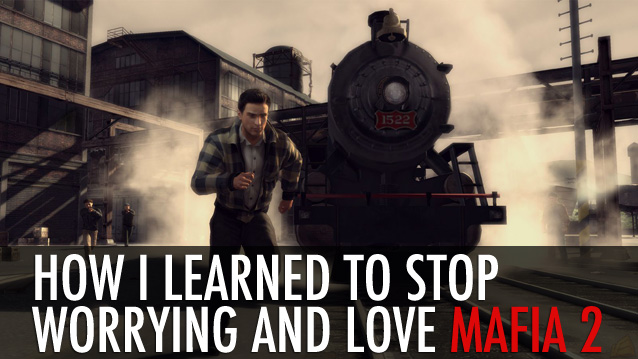
When I bought this game last year, it was almost on a whim. The first Mafia game from back in 2002 to this day remains very high on my list of games that do open worlds right while presenting a cinematic experience within them—much more so than any of Rockstar’s titles so far have ever achieved. Needless to say I had really high hopes for Mafia II in this regard. When the game arrived to generally not-too-favorable review scores, I was reluctant to pick it up right away. When I played the demo I wasn’t exactly overwhelmed. The game clearly had a lot of problems, most of which stemmed from something the first game (which is eight years old, as of the time of this writing) also had—really bad checkpoints. So I passed on it, only to pick it up anyway a few months later, while in the middle of a Sopranos watching spree.
What I was greeted with was a competently built cover shooter integrated into a semi-open world with lots of driving, shooting, and bad checkpoints. The narrative was something that I perceived as not really strong, the characters being well voiced but not really that well written. The writers had some good ideas in terms of setting, starting the tutorial level in World War II and then going on from there, with some jumps in time.
The problem of the game is that the characters aren’t particularly strong. Vito is just a handsome, but empty shell. It’s really not clear what his motives for doing the horrible things he does are, besides “get rich the Mafia way.” There was one mission early on that had me gunning down several policemen busting a heist. That wrecked my immersion pretty badly, because as an avid Mafia movie watcher I know shooting a cop usually is something a made man does when his career is taking a turn for the worse, usually something reserved for the last part of a Mafia tale. Shooting a cop is serious business that usually doesn’t just happen on the side. So I perceived this as a pretty big slip on part of the designers. Mafia II is a Mafia story after all, and shooting cops being a really bad thing to do is one of the genre’s irrevocable tropes.

There was another mission, a little later on that pitched my gangsters against a mob of juvenile delinquents. With guns. Lots of guns. There must’ve been about fifty enemies in that level. Fifty kids and my gangsters shot them up. All of them. That was the point where I decided to let this game be. Too much of a ludonarrative dissonance for me. It illustrates a bigger problem with (modern) games that have strong narratives—no matter how strong the narrative, when the gameplay sees the hero shoot down dozens of people regularly, things fall apart. It’s true for Uncharted, and it’s true for Mafia. Maybe “realistic” shootouts aren’t as interesting for a game that’s supposedly cinematic. But shootouts like this aren’t even cinematic. It’s a 20 minute mission, and about 15 minutes of that is pure shooting. In order to fuel that, there is a need for a LOT of people being shot during that time.
But I digress. Now it’s a year later and I’ve picked the game up again, mostly because I just felt like it. Of course the problems of the game haven’t disappeared. The driver AI in the game’s driving sections is still treating the player like an unwelcome intruder into a meticulously designed model train playset. They behave like the player is just not there, cutting him off, crashing into the player’s car and the likes and of course honking and flashing the lights if the player is in the way. It seems the citizens of Empire Bay are notoriously egotistical drivers who only care for... well not only for themselves per se, since traffic runs like clockwork. The problem is that the player is not integrated into that clockwork. Once I accepted this weird quirk of the game, I could work with it, roll with it, accept it.
Then there’s the other part, the shooting. As I said, it’s a competent third person cover shooter with a mid-20th century Mafia theme. And as far as that goes, it’s pretty good. The only bad thing about it, are the sometimes quite infuriatingly bad set checkpoints. What makes Mafia II worth playing, worth loving even is the insane amount of detail in the game world. Empire Bay is probably the prettiest open world game city there is yet. LA Noire’s Los Angeles is a close second. But as far as things go, Empire Bay really is a glorified model train set. It’s pretty and meticulously detailed, yet there is little to actually do besides the missions, which was a criticism leveled at the first Mafia game as well. The police AI is serviceable, and there are some nice options now as how to handle them. They can be bought off, shaken off or actively resisted, though resisting arrest can be a bit hairy. They’re still easily tricked though, and when it’s not part of a mission, shaking them takes a matter of moments.
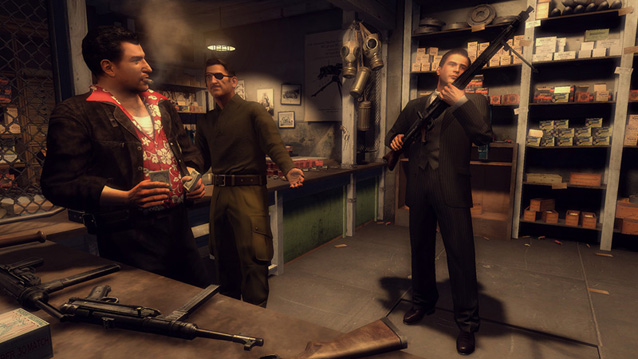
So why do I come to love this broken, unwelcoming model train set? It’s a matter of acceptance. It’s a not TOO serious, over the top, Mafia flavored 3rd person cover shooter with a model train set mission select interface. It is a very pretty game. The shooting itself looks perfect and feels really good—all ludonarrative screw-ups aside. The writing is a bit off, which is a letdown since the first game’s writing is something I remember being much better than this. But as far as the game’s ambition to delivering a cinematic experience goes, it works well enough.
Vito Scaletta is a bit bloodless as far as Gangster protagonists go. It’s not clear what’s actually driving him. His buddies are similarly weird cliches, but then, this is a videogame genrepiece. The first Mafia game was similar in that regard. The characters won’t be winning any prizes, but they’re convincing enough for the game’s narrative to work. Then there’s a the fine selection of 40s and 50s period music. It’s basically a game that needs a lot of acceptance. It’s far from flawless. It may look like a reskinned GTA clone, but just like the original game, it is quite not that. There are some borrowed elements, but the focus is clearly more on the cover shooter than on the driving and open world sections. To me, one of the worst parts are the very anachronistic radio DJs—or the radio stations in general. The music is good and strong, but for me one of Mafia’s strongest parts was that each part of the city had it’s own background music. That built identity, whereas now there’s just the radio stations going through the motions. The music is still good in establishing a feeling of the period, yet they don’t help establishing the identity of certain parts of town. But maybe that’s just me lamenting that.
Overall, Mafia II is a fun game when I can manage to just accept all it’s flaws. There are few games out there that even try doing what this game does, and most are in fact worse. Of course I’m a bit saddened that Mafia II didn’t live up to the hype and nostalgic memories I have of the first game. But that might be part of the problem. Mafia was pretty much a surprise hit that arrived at just the right time. Mafia II is a game that has an entire genre to be compared to. Several when taking into account that it’s more of an 3rd person action game than anything. But even then, there is just not really anything like it. Not GTA, not LA Noire, and sadly also not the Godfather games, which thematically are probably the closest contenders.
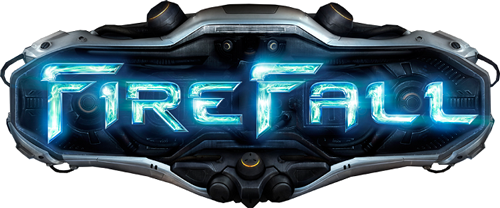
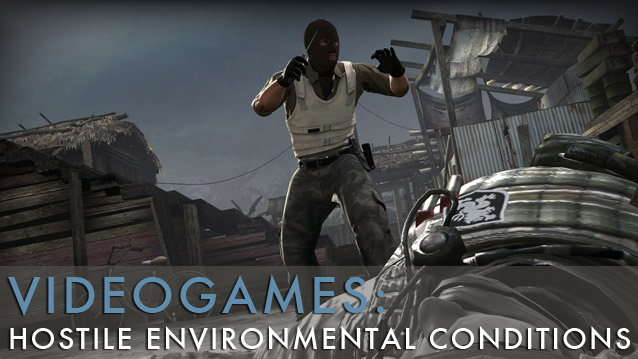
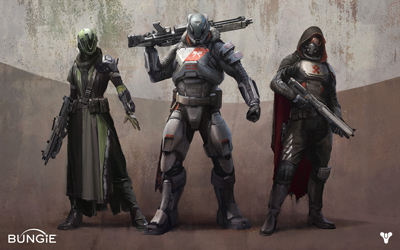

 The Elder Scrolls Online: How to Fix Crash, Patch Manifest Error, Connection issues, Launch issues, Log-in error, Black Screen etc
The Elder Scrolls Online: How to Fix Crash, Patch Manifest Error, Connection issues, Launch issues, Log-in error, Black Screen etc Alkirian: The Nine Pages Walkthrough
Alkirian: The Nine Pages Walkthrough Project Cars (PC) tire types
Project Cars (PC) tire types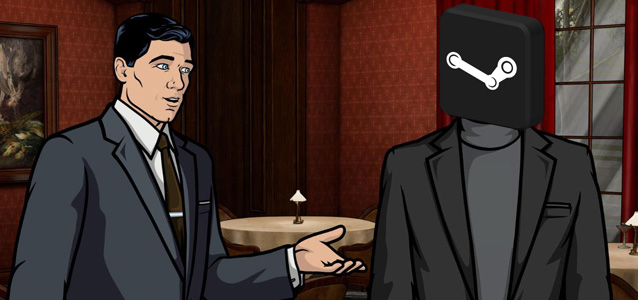 International Man of Misery: How Online Shops Ruin the Experience for Travelers
International Man of Misery: How Online Shops Ruin the Experience for Travelers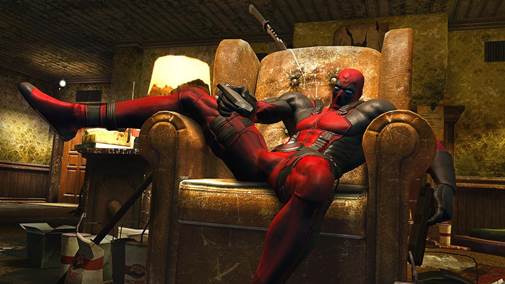 Deadpool: The Merc With A Mouth Review
Deadpool: The Merc With A Mouth Review